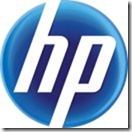Take Care of Your Storage
We are currently in a cloud storage consolidation phase, magnified by this week’s Nirvanix wind-down news. As I checked Nirvanix web site, the whole site is gone, and replaced by a single notice. This is not the first time we saw in this cloud storage field. First is ParaScale, then Cirtus and now Nirvanix.
All may be caused by VC pulling out. Not to elaborate and speculate on what happened, which could be anything and everything. Now as a user who is using cloud storage, what shall you do?
Storage Decision
The first reaction is to revisit or plan for your storage decision. As it is clear by now, the pay-as-you-go cloud storage is owned by Amazon S3. Rackspace, Windows Azure, Google Cloud Storage, HP Cloud Storage, IBM (SoftLayer) cloud storage could all be contenders with very deep pocket to support themselves. So the first place to review is who is hosting your data and whether you have direct access to the data.
Application Layer
Just like when you had a Windows File Server, if the windows file server had a mother board issue, you can always take the hard-drive out and put it on a new file server and continue to run, you need to think about horizontal layers on top of your storage choices.
Many startups forced you to think vertically, because from the app at the top to the storage at the bottom, it is like a black box to you. It may be time to start thinking about horizontal layers. You select your storage and then you select your application on top of the storage layer.
Gladinet plays at this application layer. If you have Amazon S3 storage, you can use Gladinet to access it, if you have xyz cloud storage, you can also use Gladinet to access it. In a sense, Gladinet is replaceable so it helps you to protect your storage. When you replace Gladinet with some other software, you may be losing features when accessing the storage, but you are not losing your data.
Self Host the Whole Solution
Ultimately you can self host the whole solution. For example, you can self-host the solution inside Amazon data center with EC2 and S3. Not only you picked a storage vendor, you can also control where the solution will be running from. This is Gladinet Cloud Enterprise’s niche – it allows you to self-host and self-deploy the whole solution. If you only trust your own hard drive with RAID, you can put Gladinet Cloud Enterprise on top and turn it in to a file sync & share solution. If you trust Amazon web Service, you can self-deploy it in EC2 and connect to S3. You have a lot more control.
Summary
Gladinet is this middleware that assist you to separate the storage layer from the application layer. Because of it, it put choices back into your hand. With more choices at hand, you can put together a solution that is better fit and better protected.



Comments